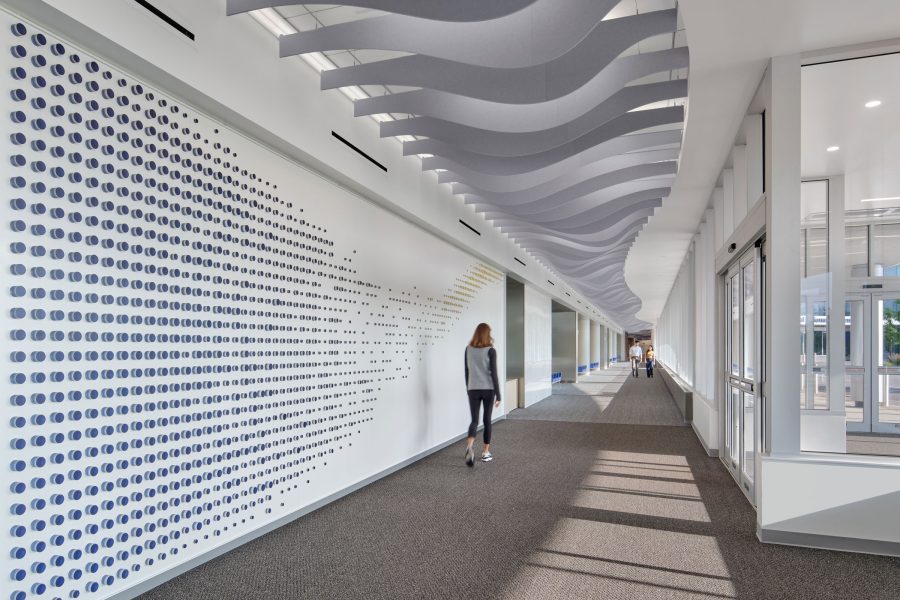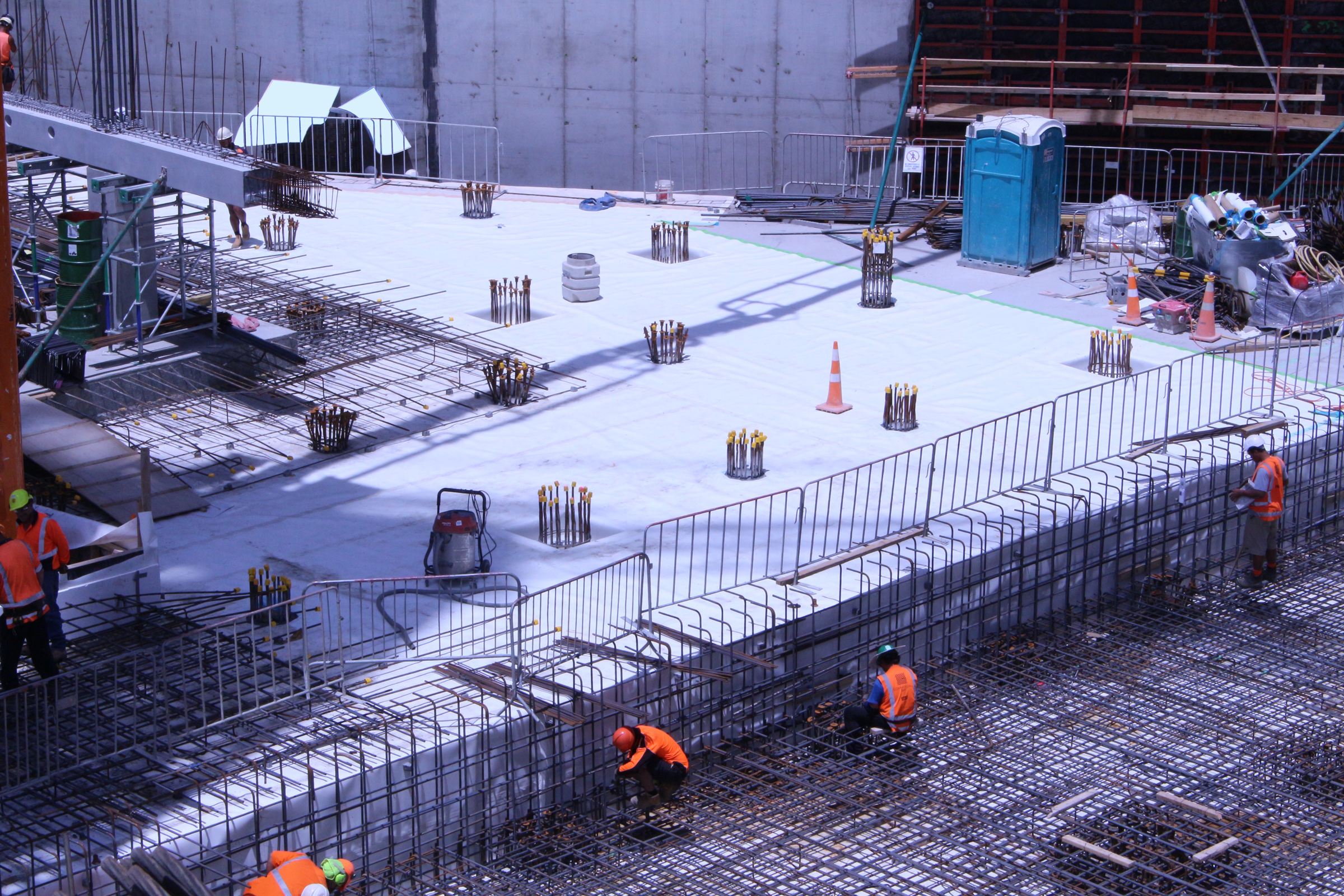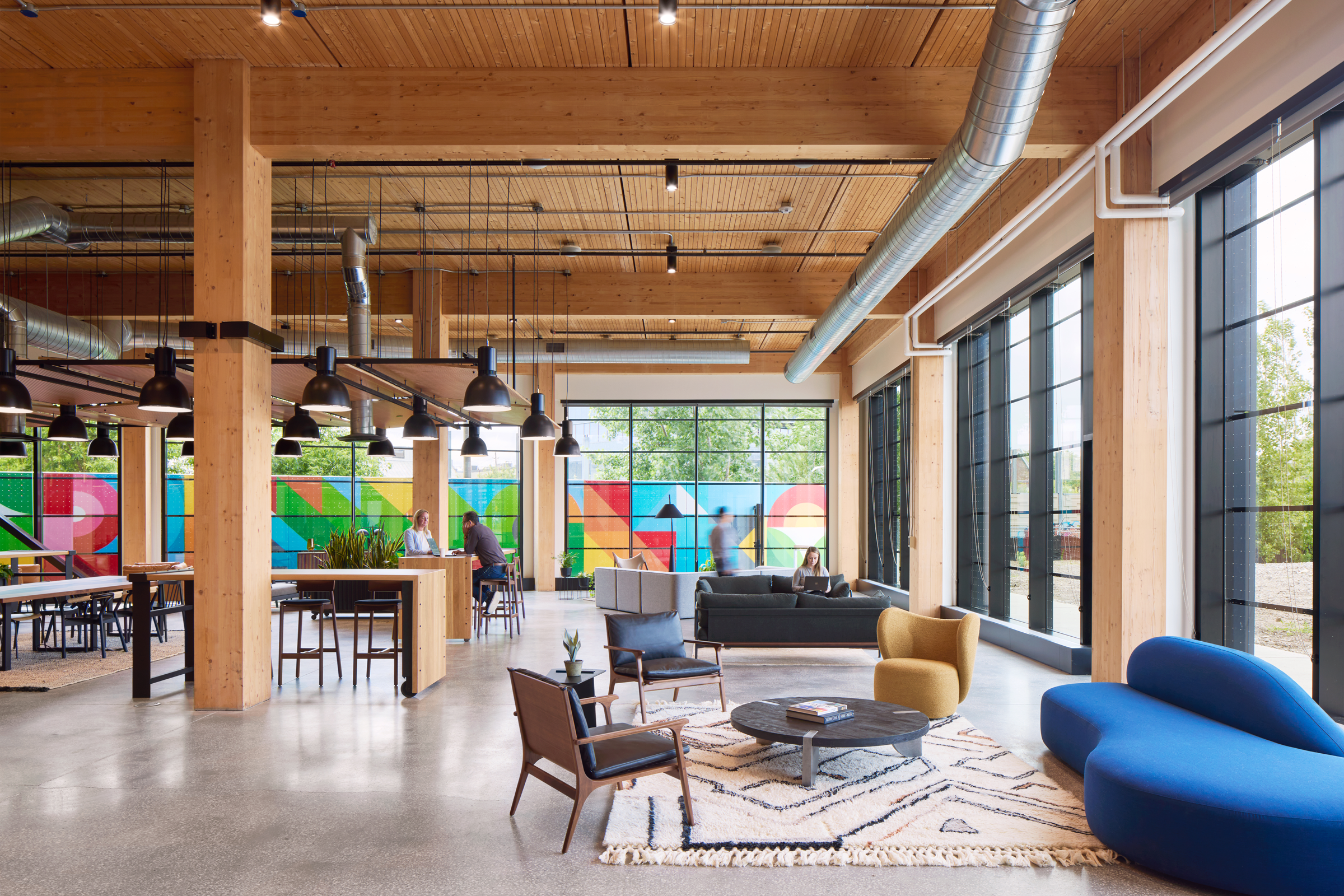Story at a glance:
- The Saunders Center for Orthopaedics and Physical Therapy is an adaptive reuse of a former mall space.
- The new facilities are among the largest outpatient orthopaedic facilities in the Northeastern US.
In Alexandra Lange’s history of the shopping mall, Meet Me by the Fountain, the design critic and author posited that the future of malls—however tenuous it might appear—rests on their ability to adapt to new needs, uses, or populations.
In Henrietta, New York, a suburb of Rochester, a former Sears department store at the 1980s-built Marketplace Mall is no longer a place of shopping but a new outpatient health care facility from the University of Rochester Medical Center (URMC).
The Project

Photo by Halkin Mason

Photo by Halkin Mason
A collaboration between architect of record SLAM (The S/L/A/M Collaborative) and design architect Perkins&Will, the 372,400-square-foot Saunders Center for Orthopaedics and Physical Therapy entailed the adaptive reuse of 227,000 square feet of existing mall space and a new 145,400-square-foot outpatient clinical services addition. Together the facility houses ambulatory surgery, physical therapy, and other essential orthopaedic services. It is among the largest outpatient orthopaedic facilities in the Northeastern US.
The Saunders Center was precipitated by converging factors: a beleaguered retail landscape in the e-commerce age and the changing nature of orthopaedic care. The building was designed to address a growing need for decentralized health care services in an underserved region. It improves access to orthopaedic services and physical therapy not despite its unconventional location—but because of it.
Why the Mall?

Photo by Halkin Mason
Why was the Marketplace Mall selected as the home of the academic medical center’s new orthopaedics facility? And what opportunities might vacant mall spaces offer other health care service providers (or use-types) in the future? To answer these questions, it’s useful to consider the rigorous site evaluation process that informed the building’s development.
At the outset seven sites were considered as possible homes for the University of Rochester Medical Center’s new orthopaedics facility. Four were greenfield sites with no buildings, while three others had buildings and varying amounts of existing infrastructure on-site. Key considerations in the site evaluation process included factors such as: location, accessibility, sustainability, visibility, speed-to-market, topography, and opportunities for future expansion, among others.
During the evaluation period it became clear that the Marketplace Mall offered unmatched advantages. Perhaps the most important of these was the mall’s location, near to the primary URMC campus and well served by car and public transport, with highway and arterial accessibility and ample existing parking onsite.
Ease of access was simplified by the fact that the Marketplace Mall is a familiar entity to most residents of the area; they know where it’s located and how to reach it. Today a new dedicated public bus stop at the Saunder Center’s entrance and a series of decentralized entry points advance access even more.
Solving Challenges

Photo by Halkin Mason
The challenges facing contemporary brick-and-mortar retailers are well documented. Locating the Saunders Center at the Marketplace Mall, however, was not simply to capitalize on a vacancy, but a response to changes in orthopaedic care. In recent years the industry has transitioned from lengthy in-patient stays to a more outpatient-centric model, with quicker recovery times and an increased focus on maintenance-focused lifelong care. The Saunders Center responds to this growing desire for decentralized, convenient that’s found nearer to home.
Compared to greenfield development alternatives, the adaptive reuse of the former Sears offered a distinct set of advantages—the lowest development cost of the seven possible sites, expedited speed-to-market, and reduced carbon emissions. The Saunders Center broke ground in June 2021 and was fully operational by 2023. According to our estimates, the building would have taken one year longer and cost 10% more had it been built from the ground-up. Lastly, the building’s reuse of existing infrastructure slashed carbon emissions stemming from demolition and new construction, contributing to the building’s pending LEED certification.
Rather than being constrained by limited square footage in a densely concentrated health care complex, the suburban scale of the Marketplace Mall—with its large footprint and low-lying mass—allowed SLAM and Perkins&Will to tailor the building for patients with orthopaedic and mobility challenges. The building’s renovated portion includes a surgical platform with three operating rooms and physical therapy and recovery areas, among others. Existing building conditions, like the former department store’s tall ceilings and existing skylights (the latter have been supplemented), allow light to penetrate deep into the Saunders Center’s core, addressing one of the primary challenges posed by a floorplate of this scale. Despite what one might first assume, the former department store offered an excellent framework for establishing a modern, efficient, and hospitable orthopaedics facility.
As the Baby Boomer generation continues to age, integrating health care services into existing retail complexes—known as “medtail”—may help malls reinvent. At the Marketplace Mall the Saunders Center has brought new traffic to the mall’s restaurants and shops, establishing a truly mixed-use property. In the era of e-commerce and aging national populations, combining retail and health care services together can be a symbiotic pairing.



